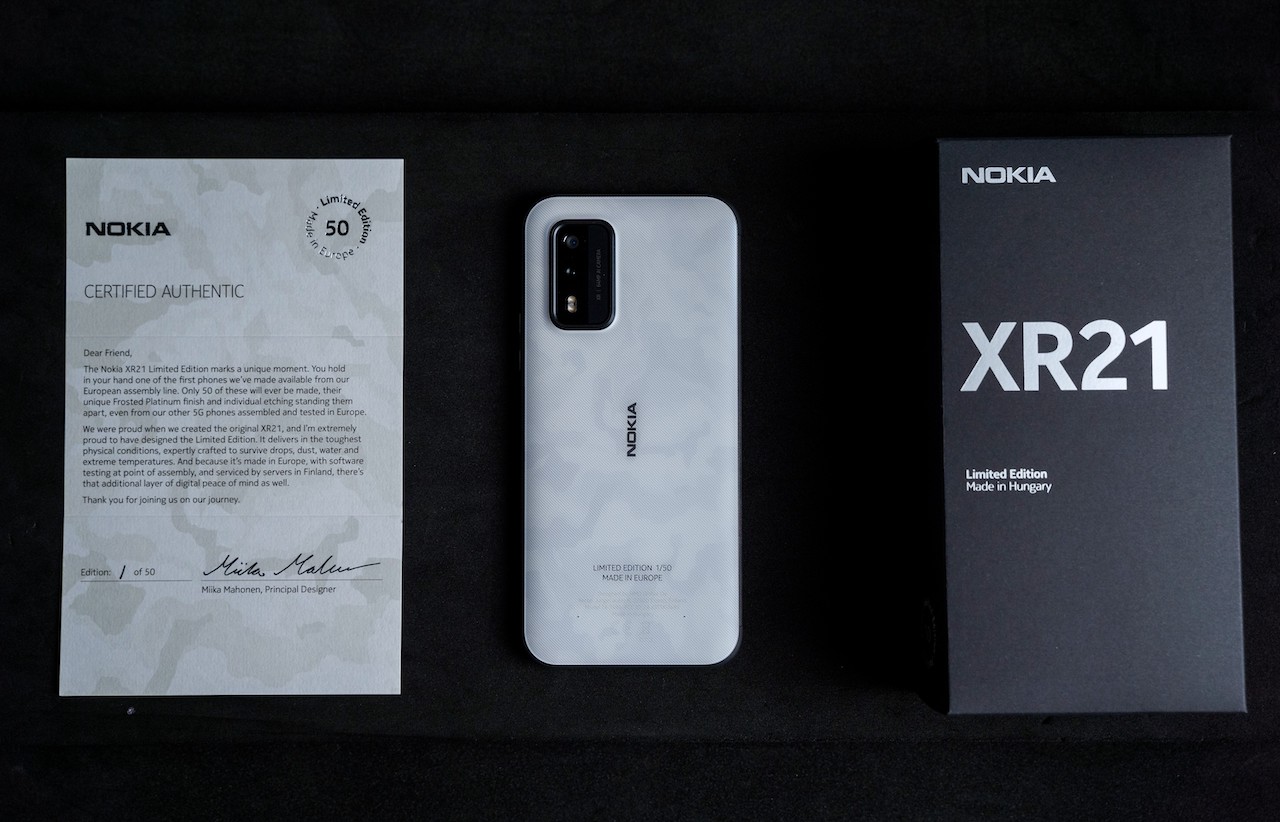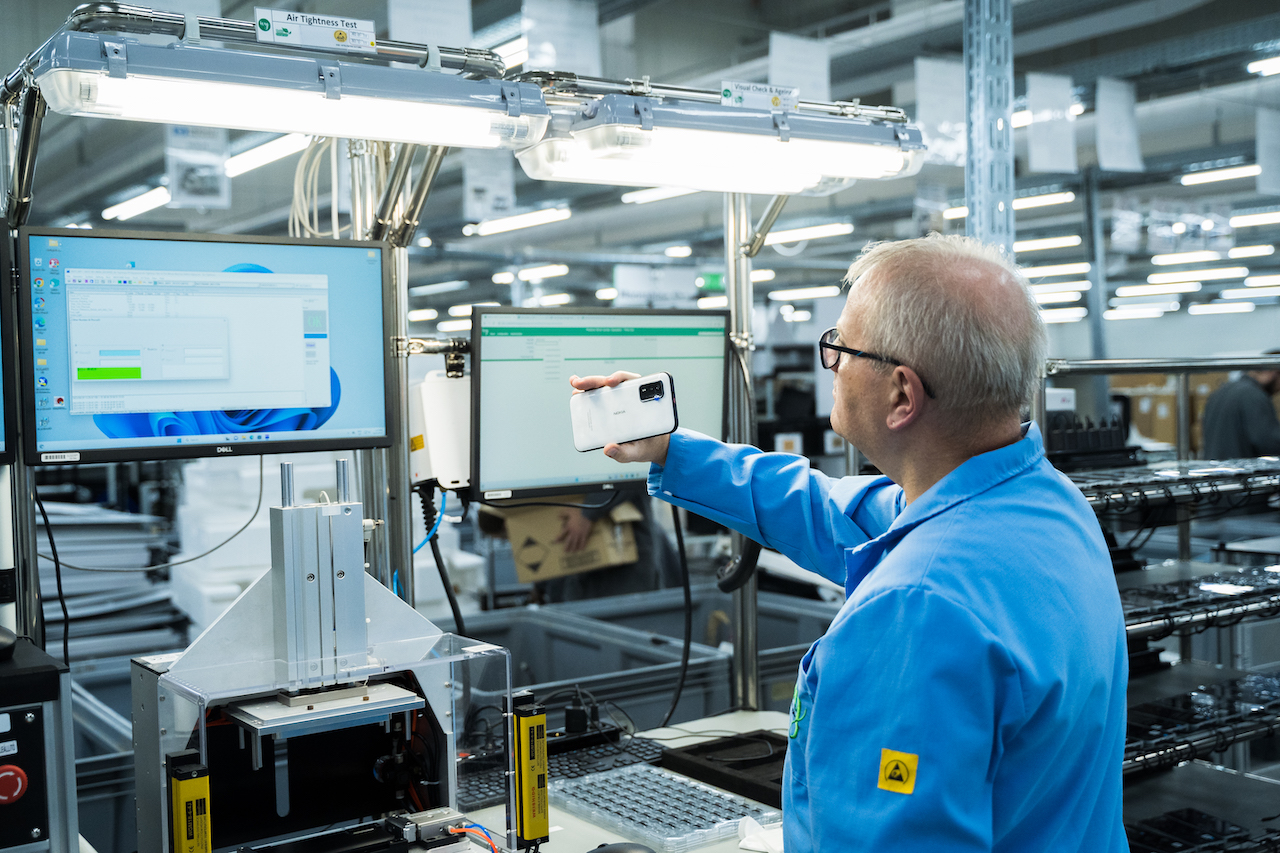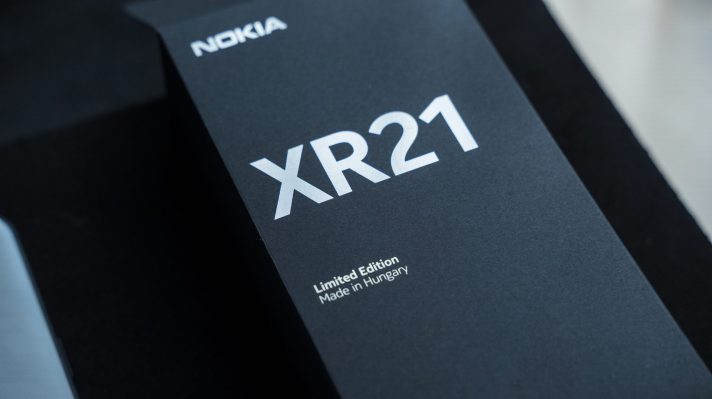HMD Global, the phone maker and marketer behind the Nokia mobile phone brand, has launched its very first smartphone manufactured in Europe.
The news comes some six months after the Finnish company first revealed it was transitioning some of its manufacturing to Europe to meet a growing demand from enterprises for locally produced hardware to address security and sustainability concerns. HMD Global hadn’t revealed where, exactly, it was manufacturing in Europe, with the company telling TechCrunch in February that it was keeping the facility under wraps due to security concerns.
“Unfortunately, due to our customers being in various security-conscious industries, we’re not allowed to tell anyone which countries we are producing these devices in, simply to keep it as secure as possible,” HMD Global chief marketing officer Lars Silberbauer said at the time.
However, the company has now seemingly had second thoughts on that, and it has confirmed at least one of its manufacturing locations is in Hungary. A spokesperson told TechCrunch that it still can’t reveal where exactly in Hungary the manufacturing facility is, though they did note that they will be adding further manufacturing and assembly capacity to additional locales in Europe.
The first device off the line is the 5G Nokia XR21, which is available for enterprises to buy today. This is pretty much the same as the XR21 that launched earlier this year, except the new variant has been assembled in Europe and HMD Global can offer enterprise customers a “higher level of security assurance through customized software and security features,” a spokesperson said, adding that they are working with a number of additional IT security partners.
Additionally, the company is making 30 limited edition versions of these devices available to the general public through the online Nokia store for consumers in the U.K., France, Germany, Austria, the Netherlands, Belgium, Spain, Italy, and Finland, with a sticker price of €699 (£599). It also plans to launch a standard (i.e., non–limited edition) of the European XR21 smartphone for consumers, which will be available in black.

Nokia XR21 Image Credits: HMD Global
By way of a brief recap, HMD Global emerged from the ashes of Microsoft’s ill-conceived Nokia devices acquisition a decade ago, a move that spawned a $7 billion “goodwill” writedown following Satya Nadella’s promotion to the CEO hot seat. Microsoft eventually shed the entire Nokia business, with the newly established HMD Global taking on the Nokia brand in 2016.
In the intervening years, HMD Global has largely focused on feature phones and budget smartphones, but the brand value of Nokia has helped the Helsinki company raise $330 million in funding from the likes of Google, Qualcomm, and Nokia itself. But just last month, HMD Global confirmed plans to bring its own-brand devices to market, too, which will sit alongside its Nokia-branded handsets — though it hasn’t revealed any specifics around these plans.
Rationale

Nokia XR21 manufacturing facility in Hungary Image Credits: HMD Global
From a feature perspective, not much has changed in the new European device beyond what was already in the existing XR21, but it seems that durability and sustainability is the name of the game in terms of its target market. The company touts the XR21’s “military-grade durability” replete with an IP69K rating, meaning that it is designed for industrial use cases where there may be high risk of dust, heat, moisture, and impact, while it also says the device is made from 100% recycled aluminum.
It’s worth noting that the materials themselves will still have to come from elsewhere in the world, most notably China, where the various metals and components will still originate before shipping to HMD Global’s manufacturing and testing facility in Europe for assembly, calibration, and testing.
Indeed, one of the main reasons HMD Global is bringing manufacturing closer to home is the security requirements from enterprises that it’s courting. The company transitioned its data centers to Europe back in 2019 for this very same reason, and part of this will also involve designing and testing the phone locally from the get-go. The company says:
Every device undergoes rigorous software and malware testing in Europe, with some Enterprise customers requesting additional security in conjunction with a number of IT security partners.
Today’s news doesn’t signal the start of a giant “lift and shift” from its existing manufacturing capacity in China and India to Europe — it wouldn’t make a whole heap of sense to build all its phones in Europe only to ship them back to Asia, which is still a significant market for the company. HMD Global has been clear that this is all about catering to a very specific demand from a very specific set of customers where sovereignty and localization are paramount.
